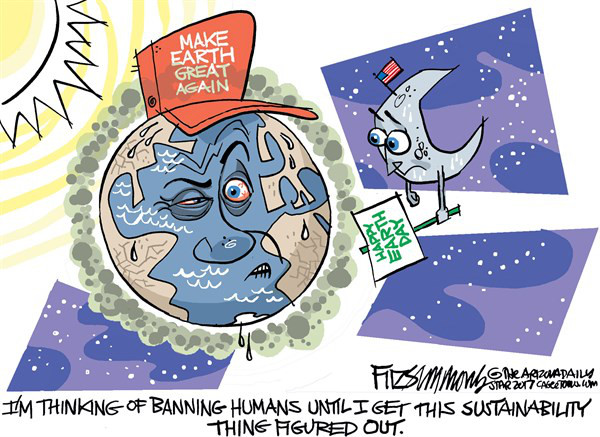Toward Climate Change Resilience
Community-Wide Conversations Are Needed to Build Systems That Can Recover Quickly

Last December’s Thomas Fire and January’s Montecito debris flow sounded a wake-up call: Climate change is not a thing happening far away in other countries, or far in the future. It is happening here and now, in our backyards.
While we cannot attribute any specific disaster to climate change, the statistics and science are overwhelming: Extreme weather events are becoming more frequent, more severe, and ever less predictable. Globally, we’ve seen about a 330 percent increase in hurricanes, droughts, wildfires, and extreme storms since 1980. These severe weather events have disastrous consequences that destroy lives, damage property, depress economies, and tear at the fabrics of our communities. They have impacts that go far beyond the boundaries of the communities most immediately affected. Worldwide as well as in California, 2017 was a monster year for natural disasters, telling us that we are facing a new normal. The long-term forecast is for things to continue getting worse — until we succeed in drastically reducing the release of greenhouse gases and sequestering some of the excess carbon already in the atmosphere.
Even as we work to cool down our climate, we must confront the reality climate change poses now and find ways to protect human lives, limit damage to our economy and communities, and build systems that can bounce back more quickly after disruption — that is, we must build climate change resilience. The new reality of a changing climate means that we cannot go on doing things the way we always have, but need to examine all aspects of our lives and consider what we can do to change in order to sustain those things most essential for our existence and those of greatest value to us.
Building climate change resilience will be a daunting, though doable, task. It may require profound changes in environmental management, urban and regional planning, infrastructure and technology, communications systems, and administrative and political structures. In other words, in virtually every aspect of our lives. Most important, building resilience will require systems — whether technological, political, or social — that are flexible and adaptive so that the impacts of disasters are more effectively absorbed and recovery is quicker and less costly.
Building climate change resilience may be expensive, but it is an economic truism that investing in prevention is, as a rule, far cheaper than recovering from failure. (According to the National Oceanic and Atmospheric Administration, 2017 was the most expensive year on record for disasters in the U.S., with hurricanes Harvey, Irma, and Maria — combined with devastating western wildfires and other natural catastrophes — totaling over $306 billion.) Also, it needs to be understood that investment in resiliency measures can be optimized by focusing first on areas that are already slated for major public or private funding, such as rebuilding in the process of disaster recovery, repairing and replacing aging infrastructure, creating housing for existing needs, etc. Doing this will require a shift in investment priorities, and more broadly, the fostering of a political climate that embraces change and proactive thinking. Such shifts need to be based on inclusive, community-wide conversations that can build consensus around points of common interest.
Toward that end, four leading institutions of science, environmental conservation, and philanthropy in our region will convene a town hall on building climate change resilience on Wednesday, April 25. Jointly organized by the UCSB Bren School of Environmental Science & Management, the Community Environmental Council, the Santa Barbara Foundation, and the Santa Barbara Museum of Natural History, Drought, Fire, and Flood: Climate Change and Our New Normal will kick off a community-wide conversation. The event will be held at The Granada Theatre 7-9 p.m., with free admission.
We hope that you, your family, and your friends will join us in this important event.
Steven Gaines is dean of UCSB’s Bren School of Environmental Science & Management, Ron Gallo is president and CEO of the Santa Barbara Foundation, Luke Swetland is president and CEO of the Santa Barbara Museum of Natural History, and Sigrid Wright is CEO/executive director of the Community Environmental Council.



